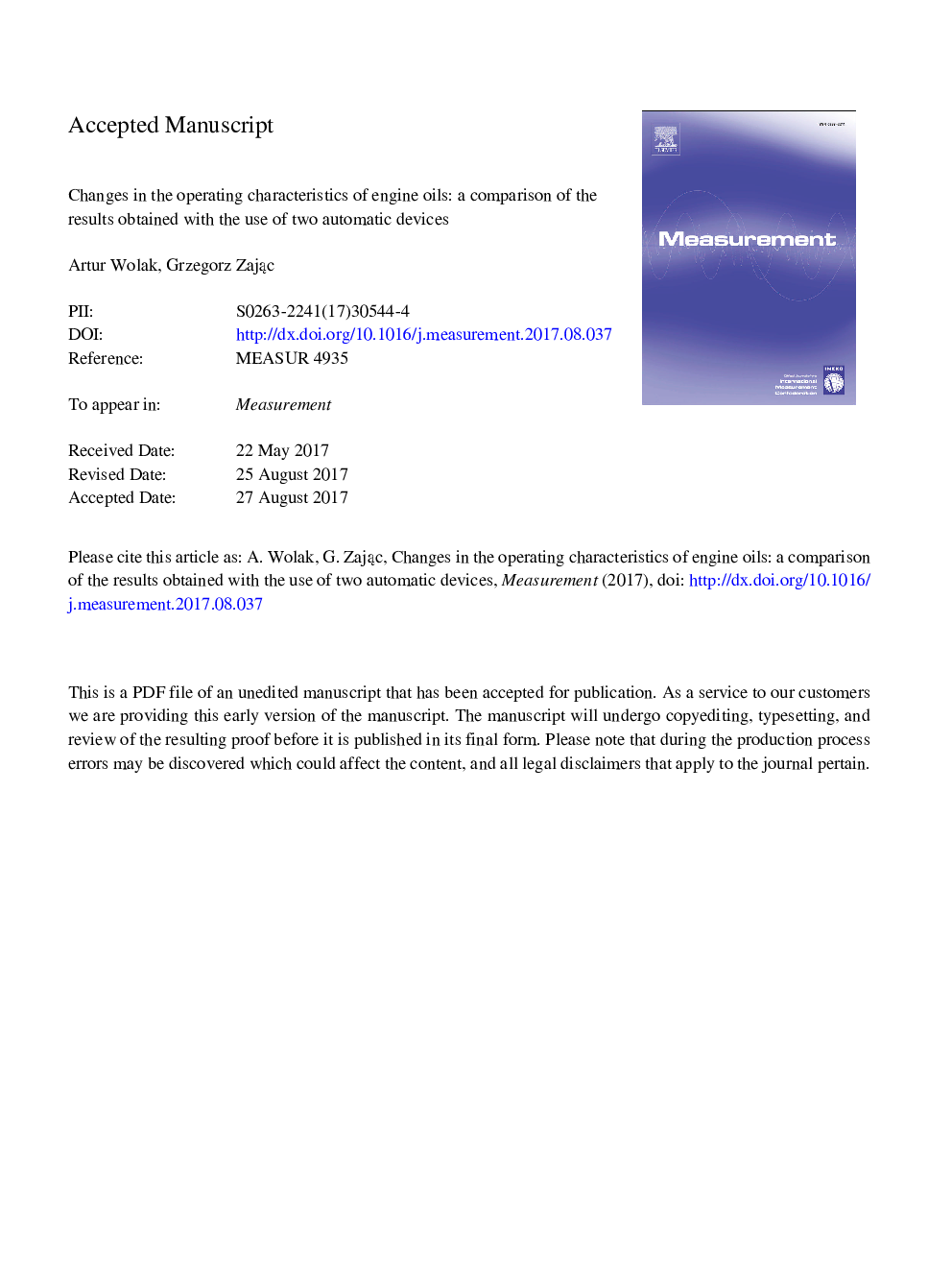| Article ID | Journal | Published Year | Pages | File Type |
|---|---|---|---|---|
| 5006397 | Measurement | 2018 | 21 Pages |
Abstract
This article focuses on the FTIR (Fourier Transform Infrared Spectroscopy) devices and their role in assessing the quality of lubricating oils. The aim of the study was to compare the analysis results obtained from two apparatuses enabling a relatively rapid assessment of the quality of lubricating oils under operating conditions with the use of infrared spectroscopy. The assessment was carried out on the basis of changes in selected physicochemical properties of engine oils occurring during actual operation. The direction and intensification of changes in such physicochemical properties as: the degree of oxidation, the degree of nitration, the degree of sulfonation, the carbon content, the basic number (TBN) and the percentage content of additives were analyzed. Based on the obtained results, the statistical relations between the two alternative apparatuses were then thoroughly described. The Bland-Altman method was used to evaluate the consistency of the obtained results. It may be concluded that both devices demonstrate good compatibility only for the degree of sulfonation. Some differences in oils used in petrol engines and in diesel engines were also noted. The obtained results may facilitate the decision-making process regarding the use of particular measuring devices.
Related Topics
Physical Sciences and Engineering
Engineering
Control and Systems Engineering
Authors
Artur Wolak, Grzegorz ZajÄ
c,
